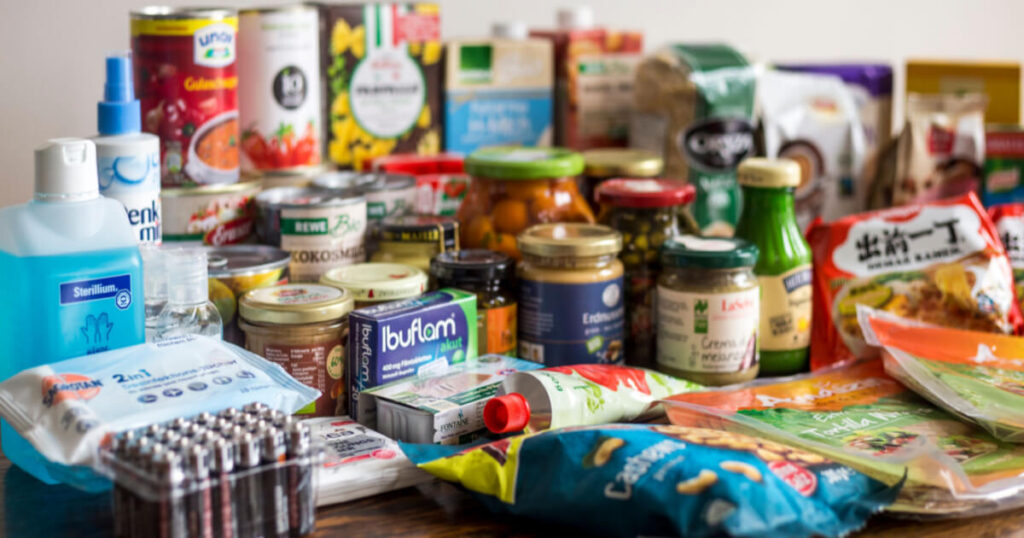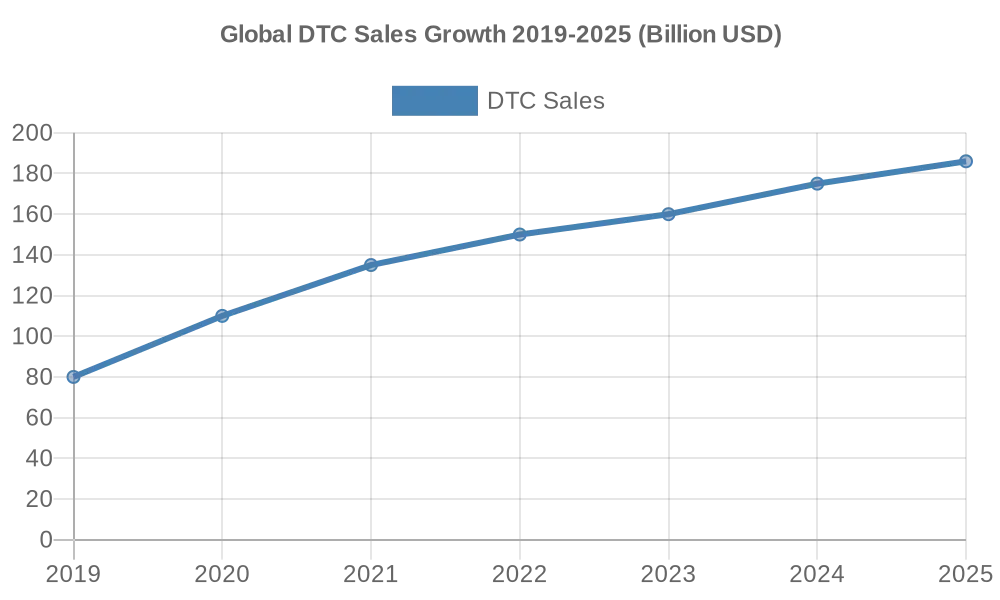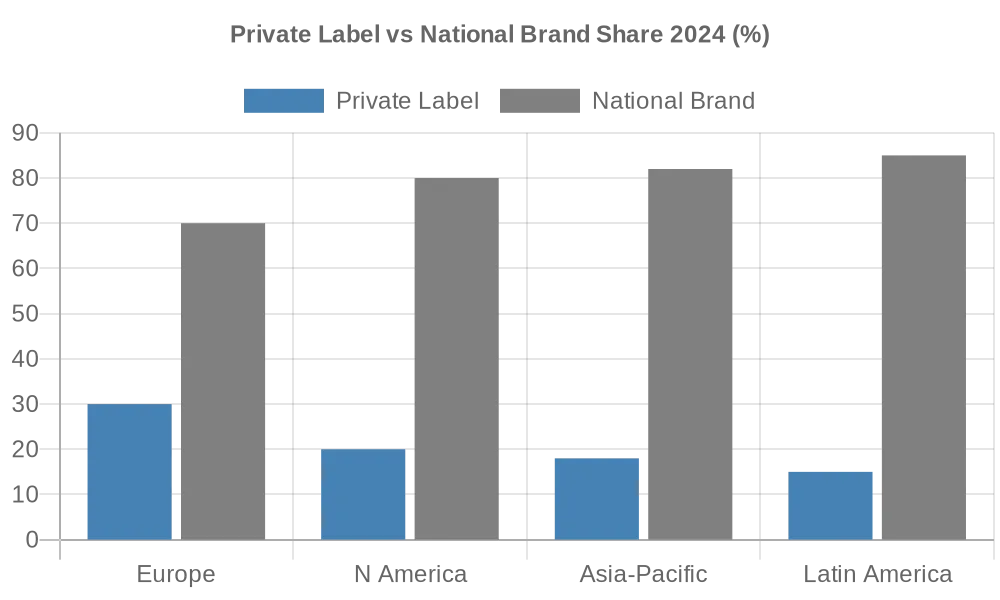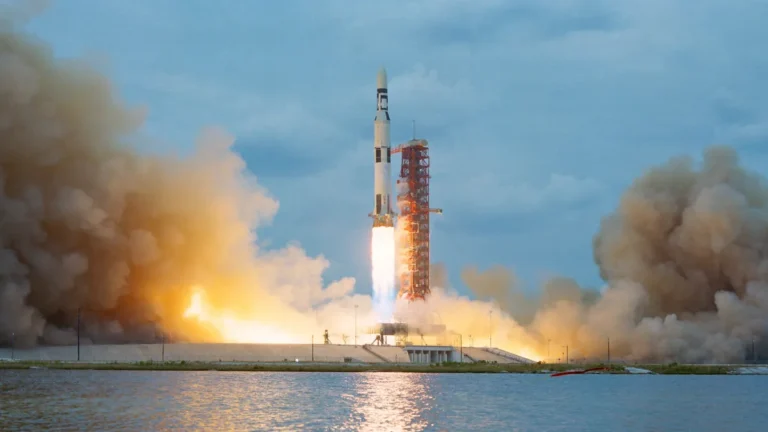
Context: CPG at the Crossroads of Disruption and Opportunity
The global Consumer Packaged Goods (CPG) sector is navigating a transformative inflection point, where evolving consumer preferences, digital disruption, and macroeconomic pressures demand a strategic reset. The global CPG market, valued at $2.1 trillion in 2024, is projected to reach $2.3 trillion by 2025—a 9.5% jump—spanning Asia’s health-driven boom, Europe’s sustainability surge, and Latin America’s price-sensitive growth (TowardsPackaging). This isn’t mere expansion; it’s a seismic shift toward direct-to-consumer (DTC) channels, private label dominance, and a consumer base from Shanghai to Santiago that expects personalization, health-focused innovation, and eco-conscious practices. For CPG CEOs and boards, the challenge is stark: leverage AI in strategy development and business decisions in CPG sector to outpace rivals and redefine value. This article dissects the global currents from 2023 to early 2025, uncovers strategic imperatives, and charts an AI-driven path to global leadership.
Macroeconomic and Commercial Landscape: A Worldwide Lens
The CPG landscape from 2023 to early 2025 reflects resilience amid complexity. Global DTC sales soared to $175 billion in 2024, projected at $186 billion for 2025, with Asia-Pacific leading at 55% of the total—China’s $70 billion DTC market doubled since 2022 (Infosys Equinox). Private labels have roared ahead, capturing 22% of global value share by Q1 2025, up from 18% in 2023, with Europe’s 30% share (led by Germany’s Aldi) outpacing North America’s 20% (Sevendots). Health and wellness products surged—Asia’s functional food sales hit $50 billion in 2024, a 15% annual rise, while Latin America’s organic segment grew 12% (Statista).
Digital transformation is pervasive—71% of global CPG leaders adopted AI in at least one function by 2024, up from 42% in 2023, with AI-driven personalization boosting India’s e-commerce CPG sales 18% (The Future of Commerce). Sustainability is a global clarion call—65% of consumers across 20 markets prefer eco-friendly packaging, up from 55% in 2022, with Africa’s sustainable goods demand spiking 20% (McKinsey). Economic volatility persists—global inflation eased to 4.2% in Q1 2025 from 6.5% in 2023, but Brazil’s 6% rate squeezes margins, while Europe’s 2.5% offers stability (IMF).
Supply chain pressures linger—raw material costs rose 10% in 2024 due to climate-driven shortages in Africa and Asia, while labor costs in China climbed 8% (Deloitte). Regulatory shifts add complexity—India’s 2024 labeling laws mandate health disclosures, while the EU’s Green Deal targets a 15% packaging waste cut by 2026 (Revenue.ai). Meanwhile, Gen Z’s influence—60% of global CPG purchases in 2024 tied to their preferences—signals a shift toward premium and purpose-driven brands (Polestar).
The data paints a vivid picture:


Strategic Implications: Navigating a Multifaceted Global Terrain
For CPG leaders in the sector, these trends aren’t just data—they’re a mandate to rethink global strategy through AI. Here’s the deep dive:
Key Insights & Trends:
DTC’s $186 billion projection by 2025 is a global power shift—China’s 40% DTC growth since 2023 outpaces Europe’s 15%, driven by platforms like Tmall (Infosys Equinox). Private labels thrive on price sensitivity—Latin America’s 15% share reflects inflation’s bite, while Europe’s 30% signals quality parity (Sevendots). Health and sustainability converge—Asia’s $50 billion functional food boom and Africa’s 20% eco-demand spike demand AI to tailor offerings. Gen Z’s 60% purchase sway—e.g., 25% of India’s snack sales tied to premium flavors—pushes innovation.
Key Risks:
Margin erosion looms—price hikes in 2024 cut Brazil’s retail volumes 8%, while raw material costs threaten 5-7% profit hits globally (Revenue.ai). Regulatory complexity escalates—EU’s Green Deal fines hit €500 million in 2024, and India’s labeling breaches cost $20 million (Deloitte). Supply chain fragility—10% cost hikes from African droughts—risks shortages, while counterfeit goods in Asia spiked 15% in 2024 (Bain).
Key Considerations:
AI must flex regionally—e.g., China’s speed-to-market versus Europe’s compliance focus. Ethical AI is non-negotiable—40% of global consumers reject brands with opaque data use, up from 30% in 2023 Statista). Talent lags—only 32% of CPG staff are AI-ready, with Latin America at 25% (Polestar). Balancing premiumization and affordability is key—e.g., Africa’s 20% premium growth versus Asia’s 15% value shift.
Key Opportunities:
Emerging markets beckon—Africa’s CPG market could hit $150 billion by 2027, Southeast Asia $200 billion (Bain). AI-driven sustainability—e.g., 12% waste cuts via optimized packaging—wins globally, from Germany’s tax breaks to Kenya’s consumer pull. Premiumization offers 10% margin lifts—e.g., Japan’s $10 billion luxury snack boom. Digital-first models, like India’s 18% e-commerce CPG surge, eye a $50 billion global prize by 2027 (The Future of Commerce).
Strategic Imperatives: The AI-Driven Global Blueprint
Leaders in the CPG sector leaders must pivot decisively, with AI as the engine of strategy and transformation. A pivotal component of this strategy is utilizing AI for strategy development and business decisions, as outlined in NexStrat.AI’s guide. NexStrat.AI is the platform to bring this to life, empowering leaders to assess trends, refine strategic options, mitigate risks, and act with precision. Schedule a live demo today and witness firsthand how NexStrat.AI’s cutting-edge solutions can transform your strategic planning
Accelerate DTC with AI Precision
The explosive growth of DTC channels—projected to reach $186 billion globally by 2025—marks a fundamental shift in how CPG firms connect with consumers, bypassing traditional retail gatekeepers. AI is the critical strategy enabler here , turning raw consumer data into actionable insights that drive personalized engagement at scale. In mature markets like Europe, where sustainability influences 65% of purchasing decisions, AI can analyze consumption patterns to offer tailored products—imagine subscription models adjusting package sizes or formulations based on household needs, all while aligning with eco-friendly expectations. This precision not only boosts loyalty but also positions brands as proactive partners in a consumer’s lifestyle, a stark contrast to the one-size-fits-all strategy of legacy retail.
In high-growth regions like Asia-Pacific, where 55% of DTC sales originate, AI’s ability to process vast e-commerce data —think millions of transactions on platforms like Tmall—enables dynamic targeting. It could mean promoting health-focused snacks during flu season or bundling essentials for urban dwellers, capitalizing on the region’s 40% DTC surge since 2023. For price-sensitive markets like Latin America, AI can optimize offerings to balance affordability and appeal, ensuring digital channels don’t just compete on cost but on relevance. The broader argument is that AI-driven DTC isn’t a luxury—it’s a survival tactic in a world where consumers demand immediacy and intimacy, and where failing to adapt risks ceding ground to digitally native disruptors.
Counter Private Labels with Innovation
Private labels’ ascent to a 22% global value share by Q1 2025—30% in Europe—poses an existential threat to branded players, as retailers leverage price advantages and improving quality to erode market dominance. AI strategy offers a counter strategy by supercharging innovation, enabling CPG firms to stay ahead through rapid, consumer-centric product development. In regions like Asia, where health and wellness sales hit $50 billion in 2024, AI can sift through dietary trends and ingredient science to craft offerings—say, functional beverages or plant-based proteins—that resonate with a growing health-conscious base, outpacing the slower, cost-focused iterations of private labels
The competitive edge lies in speed and differentiation. AI can simulate product viability—testing flavor profiles or packaging concepts virtually—cutting R&D timelines from months to weeks, a necessity in markets like North America where inflation-weary consumers weigh every purchase. In emerging economies like India, where Gen Z drives 25% of snack sales toward premium options, AI can predict demand shifts (e.g., seasonal spice preferences) to launch niche, high-margin products that private labels struggle to replicate. The discussion here pivots on agility: AI doesn’t just help CPG firms develop strategy—it ensures they do so faster and smarter, reclaiming narrative control in a price-driven race.
Lead Sustainability Globally
Sustainability is no longer a buzzword but a mandate, with 65% of global consumers favoring eco-friendly packaging by 2025 and Africa’s sustainable goods demand spiking 20%. AI is the tool to turn this pressure into a leadership opportunity, optimizing resource use and reducing environmental footprints across sprawling supply chains. In Europe, where the EU’s Green Deal aims for a 15% packaging waste cut by 2026, AI can model production processes to minimize material use—think lighter bottles or compostable wrappers—while maintaining durability, aligning with regulatory and consumer expectations.
Beyond compliance, AI strategy in CPG can drive proactive wins. In water-scarce regions like Africa, it can track usage patterns to enhance efficiency, ensuring every drop counts in production—a tangible benefit as raw material costs climb 10% due to climate shocks. In Asia, where urbanization fuels emissions, AI can optimize logistics, cutting fuel use by rerouting deliveries based on real-time traffic data. The argument is twofold: AI-led sustainability secures cost savings (critical as margins shrink 5-7% globally) and builds brand equity in a world where purpose drives 60% of Gen Z purchases, turning green commitments into market share.
Fortify Supply Chains and Compliance
Supply chain fragility—evidenced by 10% raw material cost hikes in 2024—and regulatory complexity, like India’s labeling laws or the EU’s €500 million Green Deal fines, demand resilience and adherence. AI fortifies both by predicting disruptions and ensuring compliance at scale. In volatile regions like Africa and Asia, where climate-driven shortages disrupt sourcing, AI can forecast demand and supply risks—say, cocoa or palm oil shortages—enabling preemptive stockpiling or supplier diversification, a buffer against the 8% volume drops seen in Brazil due to price hikes
On the compliance front, AI’s ability to monitor and adapt to shifting regulations is a game-changer. In India, where health disclosures became mandatory in 2024, AI can audit product labels in real time, flagging violations before they incur $20 million penalties. Globally, it can trace supply chains to combat the 15% rise in Asian counterfeits, protecting brand integrity. The discussion hinges on risk mitigation: AI transforms supply chains from liabilities into strategic assets, ensuring CPG firms not only survive but thrive amid chaos.
Build an AI-Savvy Global Team
With only 32% of CPG staff AI-ready globally (25% in Latin America), workforce capability lags behind the 71% AI adoption rate among leaders in 2024, threatening execution. AI itself can bridge this gap, enhancing skills to match the sector’s digital pivot. In mature markets, AI-driven training platforms can simulate sales scenarios—think negotiating with retailers or pitching DTC benefits—upskilling teams to handle complex, data-rich environments where personalization drives 18% of India’s e-commerce growth.
In emerging regions, where labor costs rose 8% in China, AI can automate rote tasks (e.g., inventory checks) while coaching staff on higher-value roles like interpreting consumer analytics, amplifying efficiency. The broader argument is about future-proofing: an AI-savvy team isn’t just a cost center—it’s a competitive weapon, enabling firms to capitalize on trends like Africa’s $150 billion market potential by 2027, where agility and insight will define winners.
Capture Emerging Market Growth
Emerging markets—Africa’s projected $150 billion and Southeast Asia’s $200 billion by 2027—offer a $350 billion prize, fueled by urbanization and a rising middle class. AI is the key to unlocking this, tailoring strategies to diverse, fast-evolving needs. In Africa, where sustainable goods demand jumped 20%, AI can predict regional preferences—say, affordable eco-friendly detergents—ensuring offerings hit the mark in price-sensitive yet purpose-driven markets
In Southeast Asia, where digital-first models thrive, AI can optimize e-commerce logistics and pricing, capturing the 18% CPG sales surge seen in India as a blueprint. The discussion centers on scalability: AI enables CPG firms to move beyond one-size-fits-all approaches, crafting hyper-local strategies that turn emerging markets into growth engines, not just experiments, while competitors scramble to catch up.
Final Thoughts: CPG’s Global AI Moment
In 2025, CPG isn’t a steady-state industry—it’s a global battleground where AI defines winners. Leaders leveraging AI for strategy see 12-18% higher margins—a gap poised to grow by 2030. The future rewards the bold—seize it.
Call to Action:
- Assess: Benchmark AI maturity across regions—where’s the gap?
- Analyze: Deep dive into 2025 and beyond stratetic options scenarios—e.g., raw material shocks, regulatory shifts—for clarity.
- Mitigate: Stress-test supply chains and channel sustainability.
- Execute: Deploy region-tuned strategies with urgency.
Start now—rivals won’t wait.
About NexStrat AI:
NexStrat AI is at the forefront of AI and business strategy innovation. As the ultimate strategy and transformation AI co-pilot and platform, we help leaders and strategists craft winning strategies and make effective decisions with speed and confidence.
Contact Us:
Have questions or want to learn more? Contact us at [email protected]
Follow Us:
Join our community of forward-thinking business leaders on LinkedIn.


